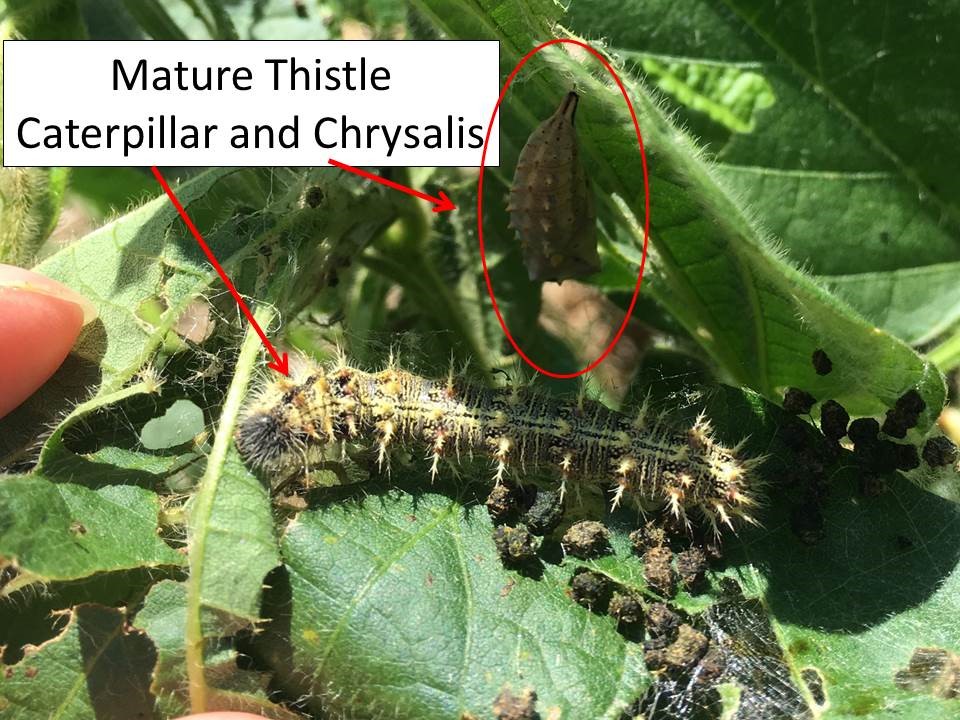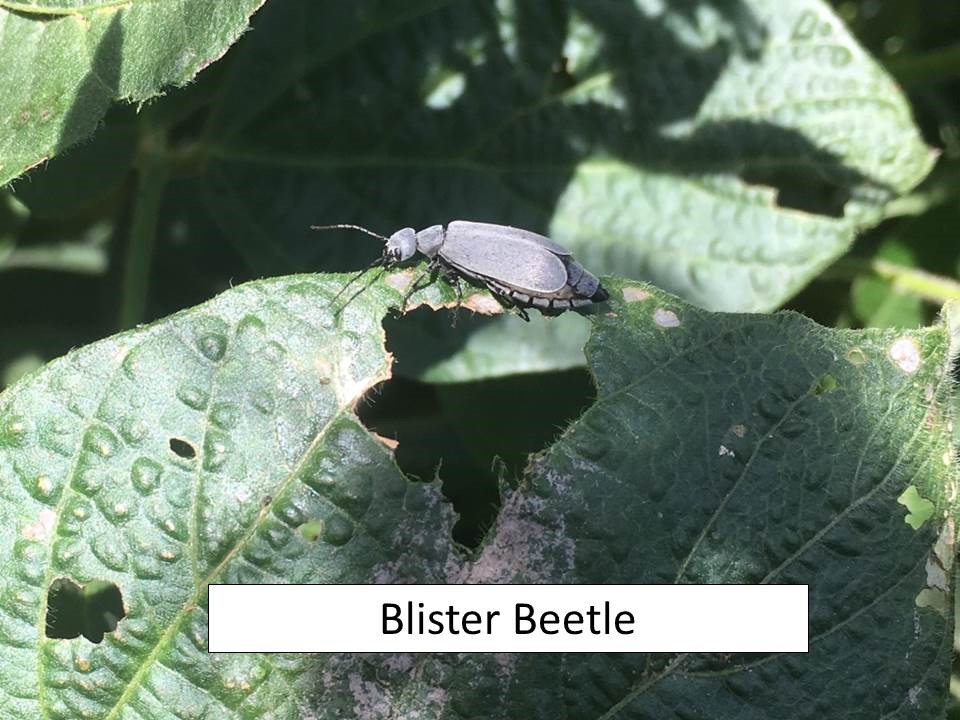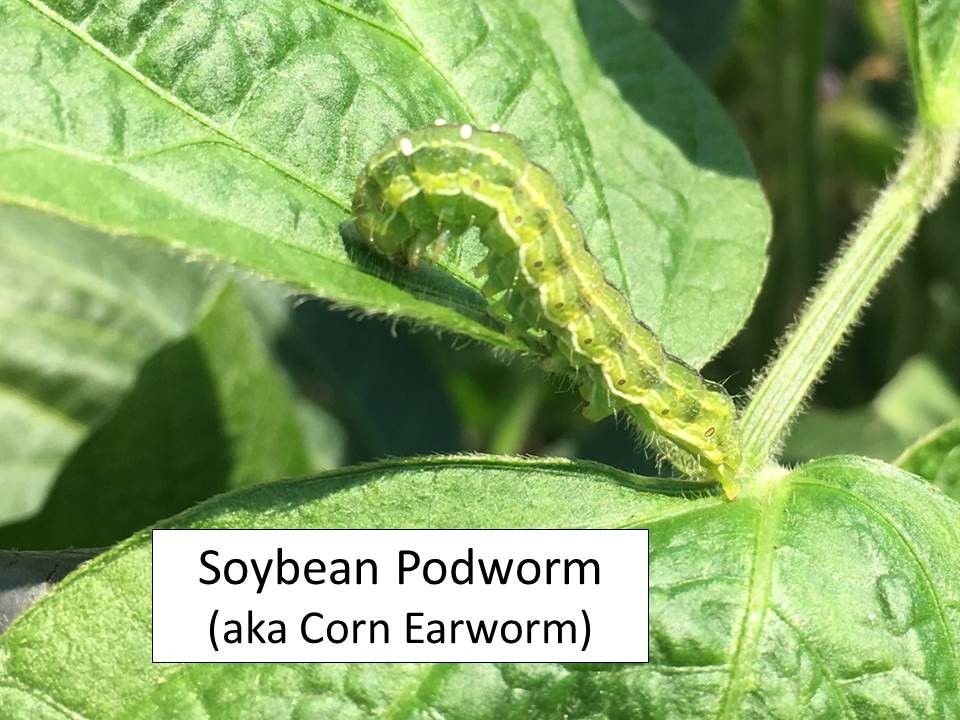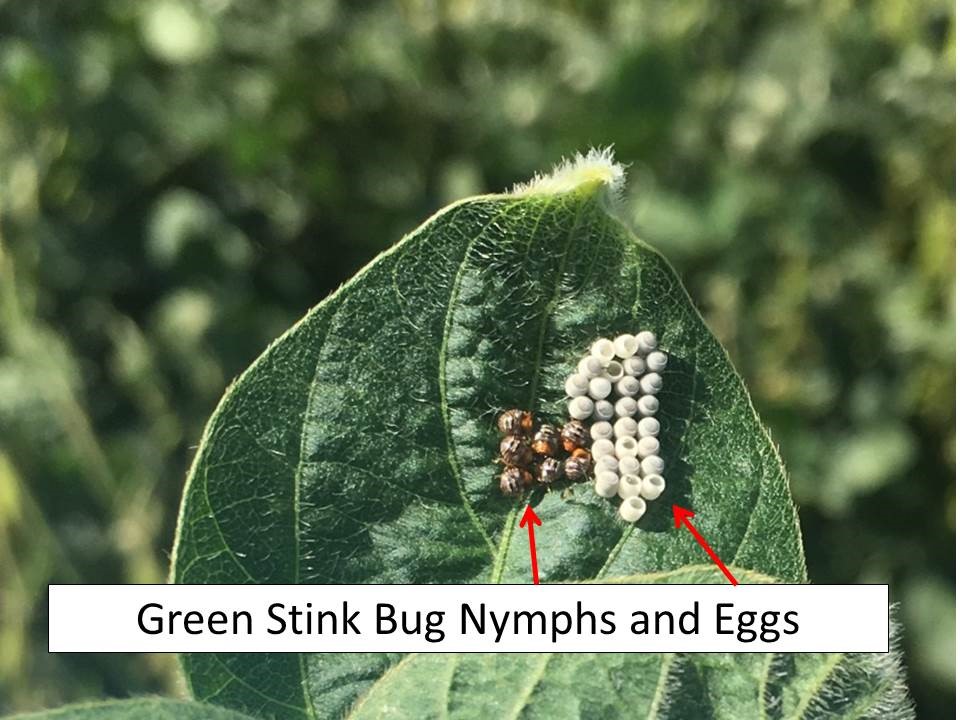–by Dr. Jeff Whitworth and Dr. Holly Schwarting
Soybeans continue to be the focus of attention of many defoliators, as well as bean and pod feeders, throughout north central Kansas. Thistle caterpillar populations seem to be largely late instar larvae and/or pupating inside of their very characteristic chrysalis. Green cloverworms also seem to be increasing in both size and densities. These are the main two species feeding on the leaves, but throw in a few yellowstriped armyworms and blister beetles and they all add up to a formidable group of very active defoliators. Fortunately, soybeans are very resilient at coping with the loss of leaf tissue. However, periodic monitoring should be continued, and if considering insecticide applications, please consult the 2017 KSU Soybean Insect Management Guide for treatment thresholds and insecticides labeled for these pests.
Pod and bean feeders seem to be just getting started. Bean leaf beetle adults may feed on the pods and will continue to do so until pods dry. Soybean podworms (aka corn earworms) may feed upon the bean within the pod and thus both may reduce yields relatively quickly. Fortunately, podworms will only feed on the beans for about two weeks. However, bean leaf beetle adults may feed on the pods as long as they remain green. Stink bug populations are also increasing and these may also feed directly on the developing beans within the pods. Again, for management decisions, please refer to the 2017 KSU Soybean Insect Management Guide: https://www.bookstore.ksre.ksu.edu/pubs/MF743.pdf






